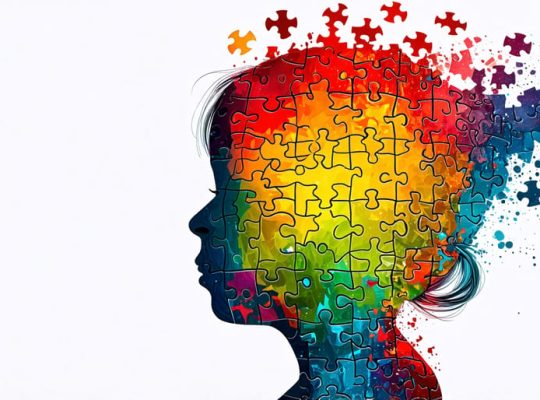Peer pressure profoundly shapes adolescent behavior, often overriding individual values and parental guidance. Recent studies reveal peer influence’s startling power – it can alter brain activity, impair decision-making, and drive risky choices. But groundbreaking research also illuminates protective factors and strategies to build resilience. By understanding peer pressure’s mechanisms, harnessing the power of positive peer influence, and nurturing strong family relationships, we can empower teens to navigate social challenges with confidence. This article explores the latest scientific insights and evidence-based tips to help parents and educators support youth in resisting negative peer pressure while promoting healthy peer bonds. Together, we can equip the next generation with the skills to forge their own path and thrive amidst the inevitable pressures of adolescence.
Understanding Peer Pressure

Types of Peer Pressure
Peer pressure can take two main forms: direct and indirect. Direct peer pressure involves explicit requests or demands from peers to engage in certain behaviors, such as trying drugs or skipping school. For example, a friend might say, “Come on, everyone’s doing it. Just try it once.” Indirect peer pressure, on the other hand, is more subtle. It occurs when a child feels compelled to fit in or conform to the group’s norms and behaviors without being directly asked. This could include dressing a certain way, listening to particular music, or adopting specific attitudes to be accepted by peers. Both types of peer pressure can be challenging for children and teens to navigate, as the desire to belong and be liked by their peers is a powerful motivator. Recognizing these different forms of peer pressure is an important step in helping children develop strategies to resist negative influences and make healthy choices.
Developmental Factors
Peer pressure affects children differently at various developmental stages. Young children may be less susceptible to peer influence, as they are more focused on pleasing adults. However, as children enter adolescence, the desire to fit in and be accepted by peers becomes increasingly important. Teens are more likely to engage in risky behaviors or conform to group norms to avoid rejection. They may also struggle with self-esteem and identity formation, making them more vulnerable to negative peer influence. As children mature into young adults, they typically develop a stronger sense of self and are better able to resist peer pressure. Understanding these developmental factors can help parents and educators provide age-appropriate support and guidance.

The Impact of Peer Pressure on Mental Health
Self-Esteem and Identity
Peer pressure can have a profound impact on a child’s self-esteem and identity formation. When children feel pressured to conform to certain behaviors or attitudes to fit in with their peers, they may suppress their authentic selves. This can lead to feelings of inadequacy, self-doubt, and a distorted self-image. Children may begin to question their own values, interests, and abilities if they don’t align with those of their peer group. Over time, this can erode their self-confidence and make it difficult for them to develop a strong sense of self. It’s crucial for parents and caregivers to foster open communication with their children, encouraging them to express their individuality and validating their unique qualities. By providing a safe and supportive environment at home, you can help your child build the resilience needed to navigate peer pressure and maintain a healthy self-concept.
Risky Behaviors
Peer pressure can lead to engaging in risky behaviors that may have serious consequences for a child’s health and well-being. When children feel pressured to fit in or gain acceptance from their peers, they may be more likely to experiment with alcohol, tobacco, or drugs. Some may also feel compelled to engage in unsafe sexual activities or reckless behavior, such as speeding or vandalism. It’s important to recognize that these actions often stem from a desire to belong and be accepted by their peer group. However, it’s crucial for parents and caregivers to have open, non-judgmental conversations with their children about the potential dangers of succumbing to peer pressure. By fostering a supportive and understanding environment at home, children can feel more comfortable discussing their experiences and seeking guidance when faced with difficult decisions. Encouraging positive friendships and promoting self-confidence can help children make healthier choices and resist the temptation to engage in risky behaviors.
Strategies for Coping with Peer Pressure
Building Resilience
Building resilience is vital for helping children navigate the challenges of peer pressure. To foster emotional strength, parents and caregivers can encourage open communication, creating a safe space for children to express their feelings and concerns. Validating their emotions and offering unconditional support can help children develop self-confidence and assertiveness. Teaching problem-solving skills and encouraging independent decision-making can empower children to stand up for their beliefs and values, even in the face of peer pressure. Modeling healthy coping mechanisms, such as deep breathing, mindfulness, and positive self-talk, can provide children with tools to manage stress and anxiety. Encouraging participation in activities that promote self-discovery and build self-esteem, such as sports, arts, or volunteering, can help children develop a strong sense of identity and purpose. By nurturing these essential skills and providing a supportive environment, parents and caregivers can help children build the resilience needed to navigate the complexities of peer relationships.
Open Communication
Maintaining an open, non-judgmental dialogue with your child is crucial in helping them navigate peer pressure. Create a safe space where they feel comfortable sharing their thoughts, feelings, and experiences without fear of judgment or punishment. Actively listen to their concerns and validate their emotions, even if you disagree with their choices. Ask open-ended questions to encourage them to open up, such as “How did that situation make you feel?” or “What do you think you could have done differently?” Avoid lecturing or criticizing, as this may cause them to shut down or become defensive. Instead, offer guidance and support, and work together to brainstorm solutions to challenges they may face. Regularly check in with your child about their friendships and social life, and be alert to any changes in behavior that may indicate they are struggling with peer pressure. By fostering open communication, you can help your child build the confidence and skills needed to make healthy choices.
Positive Peer Groups
Positive peer groups play a vital role in helping children navigate the challenges of growing up. Surrounding your child with supportive, like-minded friends can foster a sense of belonging and boost their self-esteem. These friendships provide a safe space for children to express themselves, share their feelings, and seek guidance when needed. Encourage your child to engage in activities they enjoy, where they can meet peers with similar interests and values. This could include sports teams, clubs, or community organizations. By nurturing these positive relationships, you can help your child build resilience and nurture your child’s mental well-being as they navigate the ups and downs of adolescence.
Conclusion
In conclusion, peer pressure is a complex and pervasive issue that can have significant impacts on children’s mental health and well-being. It’s essential for parents and educators to recognize the signs of negative peer influence and take proactive steps to support children in navigating these challenges. By fostering open communication, promoting self-esteem, and encouraging positive friendships, we can empower children to make healthy choices and build resilience in the face of peer pressure.
Remember, every child is unique and may respond to peer pressure differently. As caring adults, our role is to provide a safe, non-judgmental space for children to express their feelings and concerns. By modeling healthy coping strategies, setting clear boundaries, and offering unconditional love and support, we can help children develop the confidence and skills they need to resist negative influences and thrive in their social relationships.
Ultimately, the key to helping children navigate peer pressure lies in building strong, trusting relationships and creating a supportive community that values individuality, kindness, and respect. By working together as parents, educators, and mental health professionals, we can empower the next generation to stand up for their beliefs, make positive choices, and lead fulfilling lives free from the negative impacts of peer pressure.







